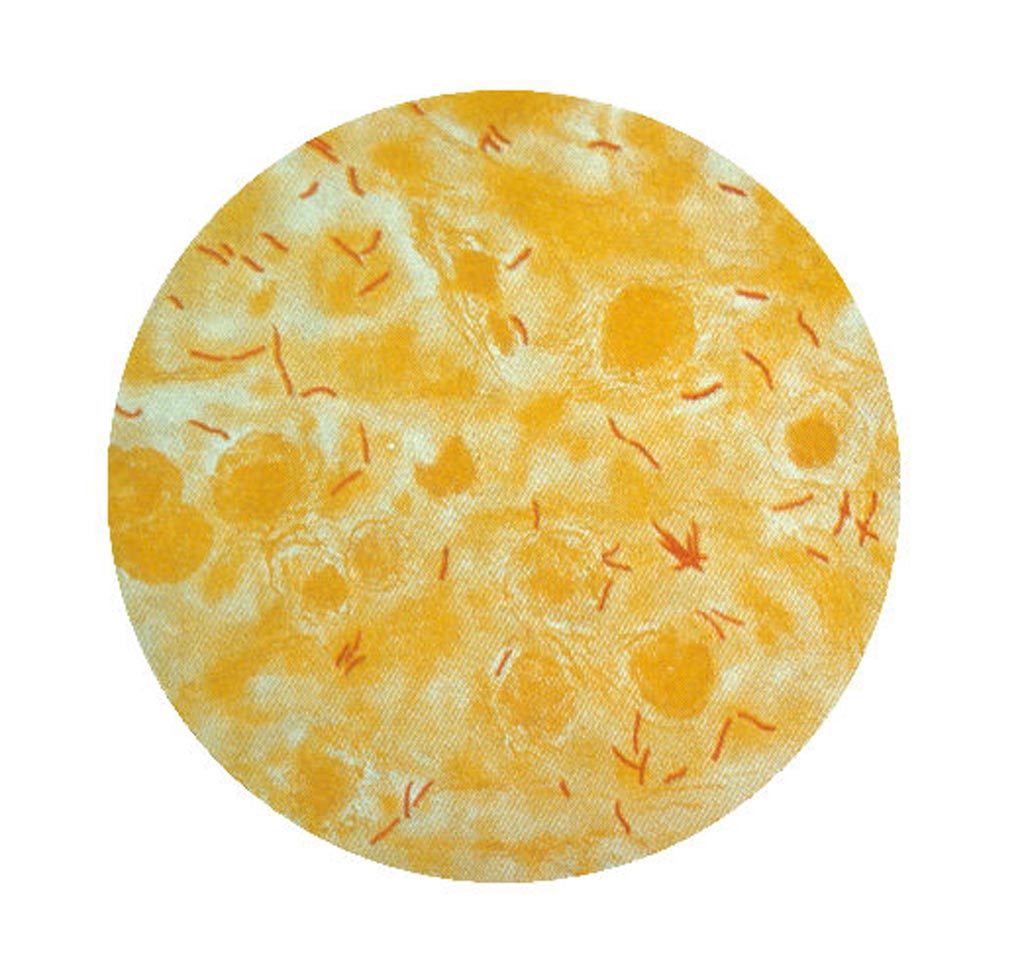Biomarker Panel Distinguishes TB from Other Infections
By LabMedica International staff writers
Posted on 25 Jun 2018
A small proof-of-principle study confirmed the validity of a 20-gene biomarker panel able to distinguish individuals with active or latent tuberculosis (TB) from those with viral or bacterial infections.Posted on 25 Jun 2018
While whole blood transcriptional signatures distinguishing active tuberculosis patients from asymptomatic latently infected individuals exist, consensus has not been achieved regarding which optimal reduced gene sets could be used as diagnostic biomarkers that also achieve discrimination from other diseases.

Image: A photomicrograph of a sputum specimen showing the presence of numerous Mycobacterium tuberculosis bacteria (Photo courtesy of the CDC).
To establish a reliable biomarker panel to distinguish between TB from other viral or bacterial infections, investigators at The Francis Crick Institute (London, United Kingdom), the biotechnology firm BIOASTER (Lyon, France), and other British, French, and South African research groups analyzed blood samples from patients across London and Africa with latent and active TB using RNA sequencing (RNA-Seq) technology.
The investigators then used an advanced modular approach to develop a 20-gene signature that discriminated active tuberculosis patients from latently infected individuals or those with acute viral and bacterial infections. This panel was used to monitor 53 TB patients in Leicester, United Kingdom, and to follow 108 of their close contacts over two years to see who developed active TB. The investigators found that those who remained healthy showed no sustained gene signature, while six of the nine who went on to develop active TB maintained a strong, sustained signature.
"Treating active TB before symptoms start could spare patients and their families from unpleasant symptoms, reduce the spread of disease and offer peace of mind to people who are not going to develop active TB," said senior author Dr. Anne O'Garra, group leader at the Francis Crick Institute. "This study was a promising proof-of-principle, offering new insights into how to develop gene signatures for active TB. The next step will be to develop and test different gene signatures in larger groups of people, with the aim of being able to offer validated tests to patients within the next decade."
Development of the biomarker panel was described in the July 19, 2018, online edition of the journal Nature Communications.
Related Links:
The Francis Crick Institute
BIOASTER














